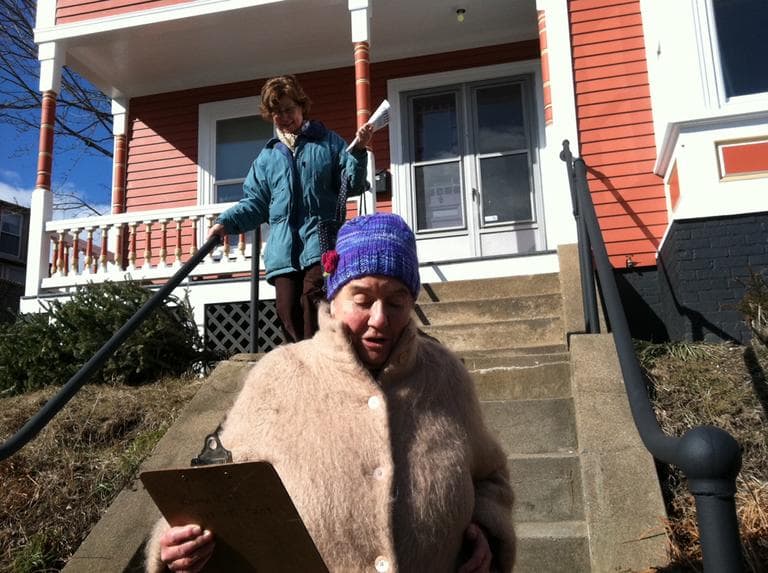Advertisement
Democrats Prepare Battleground For Brown's Re-Election
Resume
Democrats enjoy a home-field advantage in Massachusetts: they outnumber Republicans 3-1. Despite that advantage, Republican Scott Brown was able to defeat Democrat Martha Coakley in the special Senate election in 2010. Now that Sen. Brown is running for re-election, Democrats are determined to make sure their voters show up at the polls in November.
John Walsh is still haunted by the Republican victory in January 2010.
"Scott Brown won that special election by 50 votes a precinct," Walsh says. "I know it felt a lot worse than that. To be the Irish-American son of immigrants who was the chairman of the party when we lost Ted Kennedy's seat, that impacted me. It bugged me, and it felt awful."
Walsh is still chairman of the Massachusetts Democratic Party. He's working out how to erase the 50-vote margin Brown had in 2010. And it turns out that the simplest solution to Walsh's problem is to get more Democrats out to vote.
"There are actually 300,000 Democrats in Massachusetts who haven't voted in any of the last three elections," Walsh says. "If we can move 20 or 30 percent of those voters into the voting booth next November, that's the margin in the U.S. Senate race."
Thanks to voting records, the state party knows who those 300,000 voters are and it has the software to target them. Still, how do you get 300,000 people who haven't voted in the last three elections to turn out this time? Traditional phone banks don't work any more because people typically don't answer the phone unless they know who's calling.
But Walsh had an idea.
"Let me look at my neighborhood," Walsh says. "The list will tell me here's the 130 people, you know, I might know 20 of them. So if I go talk to them I can figure out directly, 'What do you need?'"
So for this election, the Massachusetts Democratic Party has decided to share its software with city and town committees, and let them decide which voters to target and how. The community that has gone the furthest in using the program is Gloucester.
Gloucester Democrats have decided to do something slightly different from what Walsh is trying to do. They want to go after all 3,000 people in town who didn't vote in the 2010 special election. Those 3,000 include Democrats, but also independents who have voted in at least one Democratic primary at some point. Party volunteers are using the software to identify likely targets.
This month Karen Bell is among two dozen Gloucester Democrats who have started going door to door. On this first canvas they find that most people aren't home. But Bell says it's a start.
"And we can get information back from this canvassing effort that will help us plan the next one," Bell says. "We're considering this kind of like a pilot project, and if it's successful, maybe we can repeat it and target different kinds of voters."
This first canvas targeted voters over the age of 40. Bell plans to recruit younger volunteers to knock on the doors of young voters. She and her fellow Gloucester Democrats plan to walk the hilly streets of their port city right up until Election Day.
This program aired on February 14, 2012.
